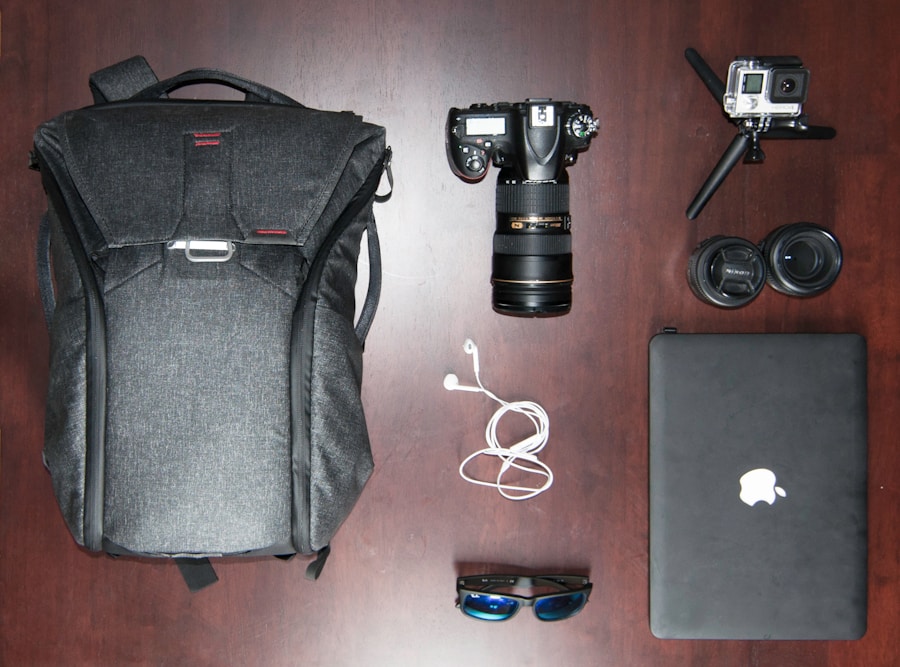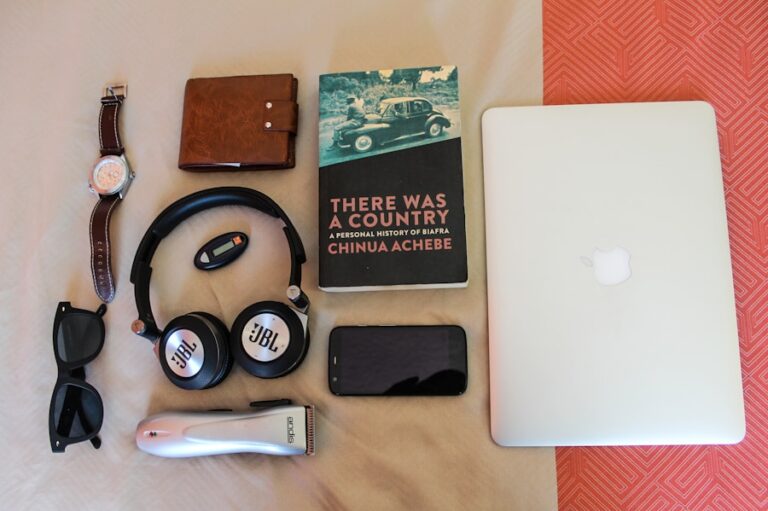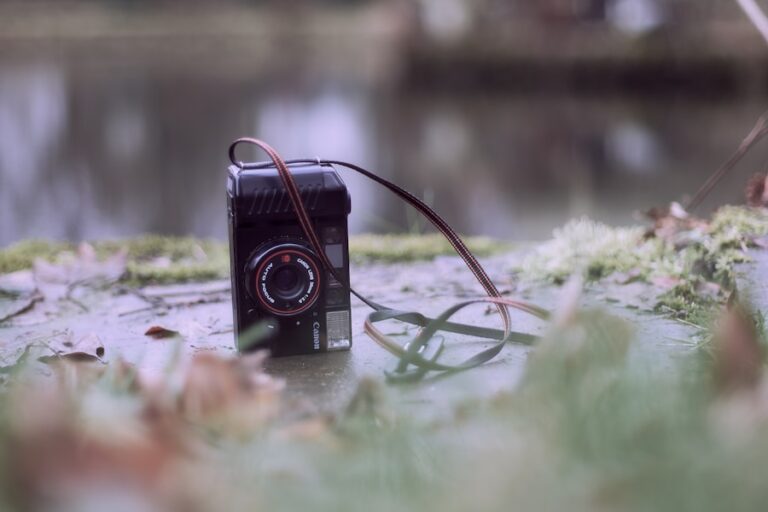When we embark on our photographic journeys, the choice of camera and lenses becomes paramount. The camera serves as our primary tool, capturing the world as we see it. Whether we opt for a DSLR, a mirrorless system, or even a compact point-and-shoot, each type offers unique advantages that cater to our specific needs.
For instance, DSLRs are renowned for their robust build and extensive lens compatibility, making them ideal for various shooting conditions. On the other hand, mirrorless cameras are often lighter and more compact, allowing us to travel with ease while still achieving high-quality images. Lenses play an equally crucial role in our photography.
The versatility of interchangeable lenses allows us to adapt to different scenarios, from wide-angle shots that capture sweeping landscapes to telephoto lenses that bring distant subjects into sharp focus. We often find ourselves drawn to prime lenses for their exceptional sharpness and low-light performance, while zoom lenses provide the flexibility we crave when we’re on the move. Each lens we choose can dramatically alter the mood and composition of our images, making it essential for us to understand their characteristics and how they align with our creative vision.
Key Takeaways
- Invest in a high-quality camera and a variety of lenses to capture different perspectives and styles.
- A sturdy tripod and other stabilization equipment are essential for achieving steady and professional-looking shots.
- Good lighting gear is crucial for creating the right mood and highlighting the subject of your video or photo.
- High-quality audio recording equipment is a must for capturing clear and crisp sound in your videos.
- Choose a reliable laptop and editing software to efficiently edit and produce your content on the go.
- Always have extra external hard drives and memory cards to store and back up your footage.
- Portable power banks and chargers are essential for keeping your equipment powered up during long shoots.
- Don’t forget miscellaneous accessories like lens filters, lens cleaning kits, and camera bags to protect and enhance your gear.
Tripod and Stabilization Equipment
Choosing the Right Tripod
Tripods come in various sizes and materials, allowing us to select one that suits our shooting style and environment. This versatility ensures that we can find a tripod that meets our specific needs, whether we’re working in a studio or outdoors.
Stabilization Equipment: Gimbals and Monopods
In addition to tripods, stabilization equipment such as gimbals and monopods can enhance our shooting experience. Gimbals are particularly useful for video work, providing smooth motion as we move through a scene. This allows us to create cinematic shots that would be difficult to achieve with handheld techniques.
Elevating Our Work
Monopods offer a balance between mobility and stability, making them ideal for events or wildlife photography where quick adjustments are necessary. By incorporating these tools into our kit, we can elevate the quality of our work and push the boundaries of our creativity.
Lighting Gear

Lighting is one of the most critical elements in photography, influencing the mood and tone of our images. As we explore various lighting options, we discover that natural light can be both a blessing and a challenge. While golden hour provides a soft, flattering glow, harsh midday sun can create unflattering shadows.
To combat these challenges, we often turn to artificial lighting solutions such as speedlights and studio strobes. These tools give us greater control over our lighting environment, allowing us to create the desired atmosphere for our subjects. In addition to speedlights and strobes, we also find value in reflectors and diffusers.
Reflectors help us bounce light back onto our subjects, filling in shadows and creating a more balanced exposure. Diffusers soften harsh light, making it more flattering for portrait work. As we experiment with these various lighting tools, we learn how to manipulate light to tell compelling stories through our images.
Ultimately, mastering lighting techniques empowers us to create stunning photographs that resonate with viewers on a deeper level.
Audio Recording Equipment
In the realm of multimedia storytelling, audio quality is just as important as visual clarity. As we venture into video production or documentary filmmaking, investing in quality audio recording equipment becomes essential. We often start with shotgun microphones that capture directional sound while minimizing background noise.
These mics are perfect for interviews or capturing ambient sounds that enhance our narratives. Additionally, lavalier microphones offer a discreet solution for capturing dialogue in interviews or presentations. Their small size allows us to clip them onto subjects without drawing attention away from the content being shared.
As we become more adept at audio recording, we also explore portable audio recorders that provide flexibility in capturing sound in various environments. By prioritizing audio quality alongside our visuals, we create a more immersive experience for our audience.
Laptop and Editing Software
Once we’ve captured our images and footage, the next step is processing and refining our work on a reliable laptop equipped with powerful editing software. Our choice of laptop is crucial; it needs to handle demanding tasks such as video editing or high-resolution photo manipulation without lagging or crashing. We often seek out models with robust processors, ample RAM, and high-quality displays that accurately represent colors.
Editing software plays a significant role in how we present our final products. Programs like Adobe Lightroom and Photoshop allow us to enhance our photographs through color correction, retouching, and creative effects. For video editing, software like Adobe Premiere Pro or Final Cut Pro provides us with the tools needed to cut together compelling narratives seamlessly.
As we hone our editing skills, we discover that this stage of the creative process is where our vision truly comes to life.
External Hard Drives and Memory Cards

As we accumulate vast amounts of data from our shoots, managing storage becomes a critical aspect of our workflow. External hard drives offer us a reliable solution for backing up our files and ensuring that our work is safe from potential loss due to hardware failure or accidental deletion. We often choose drives with high storage capacities and fast transfer speeds to streamline our workflow.
Memory cards are equally important; they serve as the temporary storage for our images before they make their way to our hard drives. We tend to invest in high-quality cards that offer fast write speeds, especially when shooting in burst mode or recording high-definition video. Having multiple memory cards on hand allows us to shoot without worrying about running out of space during critical moments.
By prioritizing data management through external drives and memory cards, we safeguard our creative endeavors for years to come.
Portable Power Banks and Chargers
In an age where technology is integral to our creative processes, ensuring that our devices remain charged is essential. Portable power banks have become a staple in our gear bags, providing us with the ability to recharge cameras, smartphones, and other devices on the go. This is particularly useful during long shoots or when we’re traveling in remote locations where access to power outlets may be limited.
We also invest in high-quality chargers that can quickly replenish our batteries between shoots. Having multiple batteries for each device ensures that we’re never caught off guard by a dead battery at a crucial moment. By staying prepared with portable power solutions, we can focus on capturing the perfect shot without the stress of dwindling battery life.
Miscellaneous Accessories
Beyond the core components of our photography kit, there are numerous miscellaneous accessories that enhance our shooting experience. Items such as lens cleaning kits help us maintain pristine optics by removing dust and smudges that could compromise image quality. We also find value in camera straps that provide comfort during long shoots while ensuring that our gear remains secure.
Additionally, items like cable releases allow us to take long-exposure shots without introducing camera shake caused by pressing the shutter button manually. We may also carry a notebook or sketchbook for jotting down ideas or planning compositions while on location. These small yet significant accessories contribute to a smoother workflow and help us stay organized as we navigate the creative process.
In conclusion, assembling a comprehensive photography kit requires careful consideration of each component’s role in enhancing our creative endeavors. From cameras and lenses to audio equipment and editing software, every piece plays a vital part in shaping the stories we tell through our images and videos. By investing in quality gear and understanding how each element works together, we empower ourselves to push the boundaries of our creativity and produce work that resonates with audiences around the world.
FAQs
What is a gear bag?
A gear bag is a bag used by creators to carry essential equipment and tools for their work, such as cameras, lenses, tripods, and other accessories.
What are some essential items found in a creator’s gear bag?
Some essential items found in a creator’s gear bag include a camera, lenses, tripod, memory cards, batteries, chargers, and cleaning supplies.
Why is it important for creators to have a well-equipped gear bag?
Having a well-equipped gear bag allows creators to be prepared for various shooting conditions and ensures that they have the necessary tools to capture high-quality content.
How do creators choose the items to include in their gear bag?
Creators choose the items to include in their gear bag based on the type of content they create, the shooting conditions they encounter, and their personal preferences for equipment and accessories.
What are some tips for organizing a gear bag effectively?
Some tips for organizing a gear bag effectively include using padded dividers or inserts to protect equipment, keeping frequently used items easily accessible, and regularly decluttering and reevaluating the contents of the bag.




